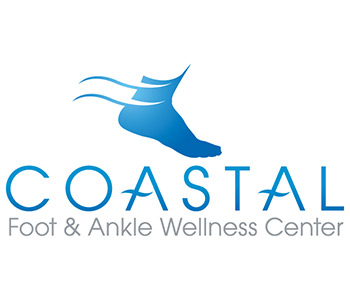Novice 5K Training Program
|
Week
|
Mon
|
Tue
|
Wed
|
Thu
|
Fri
|
Sat
|
Sun
|
|
1
|
Rest or run/walk
|
1.5 m run
|
Rest or run/walk
|
1.5 m run
|
Rest
|
1.5 m run
|
30- 60 min walk
|
|
2
|
Rest or run/walk
|
1.75 m run
|
Rest or run/walk
|
1.5 m run
|
Rest
|
1.75 m run
|
35-60 min walk
|
|
3
|
Rest or run/walk
|
2 mi run
|
Rest or run/walk
|
1.5 m run
|
Rest
|
2 MI run
|
40-60 min walk
|
|
4
|
Rest or run/walk
|
2.25 m run
|
Rest or run/walk
|
1.5 m run
|
Rest
|
2.25 m run
|
45-60 min walk
|
|
5
|
Rest or run/walk
|
2.5 m run
|
Rest or run/walk
|
2 m run
|
Rest
|
2.5 m run
|
50-60 min walk
|
|
6
|
Rest or run/walk
|
2.75 m run
|
Rest or run/walk
|
2 m run
|
Rest
|
2.75 m run
|
55-60 min walk
|
|
7
|
Rest or run/walk
|
3 m run
|
Rest or run/walk
|
2 m run
|
Rest
|
3 m run
|
60 min walk
|
|
8
|
Rest or run/walk
|
3 m run
|
Rest or run/walk
|
2 m run
|
Rest
|
Rest
|
5-K Race
|
HOW MUCH DO YOU NEED TO TRAIN to be able to run your first 5-K race? Some individuals who possess a reasonably good level of fitness (because they bicycle or swim or participate in other sports) could probably go out and run 3 miles on very little training. They might be sore the week after the race, but they still could finish.
But if you’ve made the decision to run a 5-K race, you might as well do it right. Above is an eight-week training schedule to help get you to the finish line. It assumes that you have no major health problems, are in reasonably good shape, and have done at least some jogging or walking. Be careful not to overdo it, particularly if this is your first time training for a 5-K.
The terms used in the training schedule are somewhat obvious, but let me explain what I mean anyway.
Rest: The most important day in any beginning or intermediate running program is rest. Rest days are as vital as training days. They give your muscles time to recover so you can run again. Actually, your muscles will build in strength as you rest. Without recovery days, you will not improve.
Run: Put one foot in front of the other and run. It sounds pretty simple, and it is. Don’t worry about how fast you run; just cover the distance–or approximately the distance suggested. Ideally, you should be able to run at a pace that allows you to converse comfortably while you do so. This isn’t always easy for beginners, so don’t push too hard or too fast.
Walk/Run: This is a combination of running and walking, suggested for those in-between days when you want to do some running, but only some. There’s nothing in the rules that suggests you have to run continuously, either in training or in the 5-K race itself. Use your own judgment. Run until you begin to feel fatigued, then walk until recovered. Run. Walk. Run. Walk. Another option for in-between days is to do some cross-training: biking, swimming or just plain walking. You get a little exercise, but not so much that you are fatigued for the next day’s running workout.
Walk: Walking is an excellent exercise that a lot of runners overlook in their training. In the training schedule below, we suggest that you go for an hour-long walk on the day after your longest run. Don’t worry about how fast you walk, or how much distance you cover. Take time to stop and sniff the flowers or enjoy a scenic view. Not all training should be difficult. If a 60-minute walk seems too much at first, begin with about 30 minutes and add 5 minutes a week until you reach 60 minutes.
Intermediate 5K Training Program
|
Week
|
Mon
|
Tue
|
Wed
|
Thu
|
Fri
|
Sat
|
Sun
|
|
1
|
Rest
|
3 m run
|
5 x 400
|
3 m run
|
Rest
|
3 m run
|
5 m run
|
|
2
|
Rest
|
3 m run
|
30 min tempo
|
3 m run
|
Rest
|
3 m fast
|
5 m run
|
|
3
|
Rest
|
3 m run
|
6 x 400
|
3 m run
|
Rest
|
4 m run
|
6 m run
|
|
4
|
Rest
|
3 m run
|
35 min tempo
|
3 m run
|
Rest
|
Rest
|
5-K Test
|
|
5
|
Rest
|
3 m run
|
7 x 400
|
3 m run
|
Rest
|
4 m fast
|
6 m run
|
|
6
|
Rest
|
3 m run
|
40 min tempo
|
3 m run
|
Rest
|
5 m run
|
7 m run
|
|
7
|
Rest
|
3 m run
|
8 x 400
|
3 m run
|
Rest
|
5 m fast
|
7 m run
|
|
8
|
Rest
|
2 m run
|
30 min tempo
|
2 m run
|
Rest
|
Rest
|
5-K Race
|
IF YOU HAVE RUN A NUMBER OF RACES AT THE 5-K DISTANCE, you probably are not going to be content to merely finish your 5-K race. You’d like to finish it with grace, in style and maybe improve your time (known as setting a Personal Record, or PR). The above training schedule will take you to PR Territory. This Intermediate Program is one step up from the Novice Program, but not quite as difficult as the Advanced Program.
To set a PR, you need to improve your endurance and your speed. You can do this by (1) running more miles, (2) running faster, or (3) some combination of both. In order to achieve full benefit from this program, you probably need to have been running 3-4 days a week for the last year or two and averaging 15-20 miles weekly, It helps if you have an understanding of the concepts of speedwork.
Here is the type of training you need to do, if you want to improve your 5-K time:
Run: When the schedule says “run,” that suggests that you run at an easy pace. How fast is easy? You need to define your own comfort level. Don’t worry about how fast you run; just cover the distance suggested–or approximately the distance. Ideally, you should be able to run at a pace that allows you to converse with a training partner without getting too much out of breath.
Fast: For several of the Saturday runs, I suggest that you run “fast.” How fast is “fast?” Again, that depends on your comfort level. Go somewhat faster than you would on a “run” day. If you are doing this workout right, you probably do not want to converse with your training partner, assuming you have one. It’s okay now to get out of breath.
Long Runs: Once a week, go for a long run. Run 5 to 7 miles at a comfortable pace, not worrying about speed or distance. You should be able to carry on a conversation while you run; if not, you’re going to fast. Don’t be afraid to stop to walk, or stop to drink. This should be an enjoyable workout, not one during which you punish yourself.
Interval Training: To improve speed, you sometimes need to train at a pace somewhat faster than your race pace for the 5-K, about the pace you would run in a 1500 meter or mile race. Run 400 meters hard, then recover by jogging and/or walking 400 meters. Before starting this workout, warm-up by jogging a mile or two, stretching, and doing a few sprints of 100 meters. Cool down afterwards with a short jog.
Tempo Runs: This is a continuous run with an easy beginning, a buildup in the middle to near 10-K race pace, then ease back and cruise to the finish. A typical tempo run would begin with 5-10 minutes easy running, continue with 10-15 faster running, and finish with 5-10 minutes cooling down. You can’t figure out your pace on a watch doing this workout; you need to listen to your body. Tempo runs are very useful for developing anaerobic threshold, essential for fast 5-K racing.
Rest: You can’t train hard unless you are well-rested. The schedule includes two designated days for rest: Mondays and Fridays. The easy 3-mile runs scheduled for Tuesdays and Thursdays are also to help you rest for hard workouts on other days. The final week before the 5-K also is a rest week. Taper your training so you can be ready for a peak performance on the weekend.
Stretch & Strengthen: An important addendum to any training program is stretching. Don’t overlook it–particularly on days when you plan to run fast. Strength training is important too: push-ups, pull-ups, use of free weights or working out with various machines at a Health Club. Runners generally benefit if they combine light weights with a high number of repetitions, rather than pumping very heavy iron. Tuesdays and Thursdays would be good days to combine stretching and strengthening with your easy run, however, you can schedule these workouts on any day that is convenient for your business and personal schedule. For some good routines, see: Stretch & Strengthen.
Racing: Some racing is useful in helping you to peak. Consider doing some other races at 5-K to 10-K distances to test your fitness. The following schedule includes a test 5-K race halfway through the program. You could race more frequently (once every two weeks), but too much racing is not a good idea.
Advanced 5K Training Program
|
Week
|
Mon
|
Tue
|
Wed
|
Thu
|
Fri
|
Sat
|
Sun
|
|
1
|
3 m run
|
5 x 400
|
Rest or easy run
|
30 min tempo
|
Rest
|
4 m fast
|
60 min run
|
|
2
|
3 m run
|
8 x 200
|
Rest or easy run
|
30 min tempo
|
Rest
|
4 m fast
|
65 min run
|
|
3
|
3 m run
|
6 x 400
|
Rest or easy run
|
35 min tempo
|
Rest
|
5 mi fast
|
70 min run
|
|
4
|
3 m run
|
9 x 200
|
Rest or easy run
|
35 min tempo
|
Rest or easy run
|
Rest
|
5-K test
|
|
5
|
3 m run
|
7 x 400
|
Rest or easy run
|
40 min tempo
|
Rest
|
5 m fast
|
75 min run
|
|
6
|
3 m run
|
10 x 200
|
Rest or easy run
|
40 min tempo
|
Rest
|
6 m fast |
85 min run
|
|
7
|
3 m run
|
8 x 400
|
Rest or easy run
|
45 min tempo
|
Rest
|
6 m fast
|
90 min run
|
|
8
|
2 m run
|
6 x 200
|
30 min tempo
|
Rest or easy run
|
Rest
|
Rest
|
5-K Race
|
IF YOU’RE A SEASONED VETERAN OF THE RUNNING WARS, an individual who has been running for several years and who has run numerous 5-K races and races at other distances, there comes a time when you want to seek maximum performance. Regardless of your age or ability, you would like to run as fast as you possibly can. You want a training program that will challenge you. Here it is!
Let me state what you probably know already. To achieve maximum performance, you need to improve your endurance and your speed. You can do this by (1) running more miles, (2) running faster, or (3) some combination of both. The following training schedule is a much more sophisticated training schedule than that offered to Novice Runners or to Intermediate Runners. In order to achieve full benefit from this program, before starting you probably need to be running 4-5 days a week, 20-30 miles a week or more, and at least have an understanding of the concepts of speedwork. If not, drop back to one of the other programs.
Here is the type of training you need to do, if you want to improve your 5-K time:
Run: When the schedule says “run,” that suggests that you run at an easy pace. How fast is easy? You need to define your own comfort level. Don’t worry about how fast you run; just cover the distance suggested–or approximately the distance. Ideally, you should be able to run at a pace that allows you to converse with a training partner without getting too much out of breath.
Fast: For the Saturday runs, I suggest that you run “fast.” How fast is “fast?” Again, that depends on your comfort level. Go somewhat faster than you would on a “run” day. If you are doing this workout right, you probably do not want to converse with your training partner, assuming you have one. It’s okay now to get out of breath.
Long Runs: Once a week, go for a long run at an easy pace. (Notice use of the word “easy!”) Run 60 to 90 minutes at a comfortable pace, not worrying about speed or distance. Think minutes rather than miles, which allows you to explore different courses that you have not measured, or run in the woods where distance is unimportant. You should be able to carry on a conversation while you run; if not, you’re going to fast. Don’t be afraid to stop to walk, or stop to drink. This should be an enjoyable weekend run, not one during which you punish yourself.
Interval Training: To improve your speed, train at a pace somewhat faster than your race pace for the 5-K, about the pace you would run in a 1500 meter or mile race. Run 400 meters hard, then recover by jogging and/or walking 400 meters. A second variation is to run 200 meter repeats at 800 race pace with 200 jogging between. Before starting this workout, warm-up by jogging a mile or two, stretching, and doing a few sprints of 100 meters. Cool down afterwards with a short jog.
Tempo Runs: This is a continuous run with an easy beginning, a build-up in the middle to near 10-K race pace (or slightly slower than your pace in a 5-K), then ease back and slow down toward the end. A typical Tempo Run would begin with 5-10 minutes easy running, build to 10-15 minutes at 10-K pace, then 5-10 minutes cooling down. You can’t figure out your pace on a watch doing this workout; you need to listen to your body. Tempo Runs are very useful for developing anaerobic threshold, essential for fast 5-K racing.
Stretch & Strengthen: An important addendum to any training program is stretching. Don’t overlook it–particularly on days when you plan to run fast. Strength training is important too: push-ups, pull-ups, use of free weights or working out with various machines at a Health Club. Runners generally benefit if they combine light weights with a high number of repetitions, rather than pumping very heavy iron. Mondays and Wednesdays would be good days to combine stretching and strengthening with your easy run, however, you can schedule these workouts on any day that is convenient for your business and personal schedule. For some good routines, see: Stretch & Strengthen.
Rest: You can’t train hard unless you are well-rested. The schedule includes one designated day of rest (Friday) when you do nothing and a second day (Wednesday) when you have an option to also take a day off. The easy 3-mile runs scheduled for Mondays are also to help you rest for the next day’s hard workout, so don’t run them hard! The final week before the 5-K also is a rest week. Taper your training so you can be ready for a peak performance on the weekend.
Racing: Some racing is useful to help you peak. Consider doing some other races at 5-K to 10-K distances to test your fitness. The following schedule includes a test 5-K race halfway through the program. You could race more frequently (once every two weeks), but too much racing is not a good idea.
The above schedule is only a guide. Feel free to make minor modifications to suit your work and family schedule. The progression below suggests adding a quarter-mile to most runs each week. That’s one lap on most outdoor tracks. If you train on the roads, or on trails, it’s more difficult to measure precisely how far you run. So don’t worry about it. Approximate the distance. Feel free to make minor modifications to suit your work and family schedule.
Above information taken from Hal Higdon’s website on race training. Please visit HalHigdon.com for more info!
IF YOU HAVE RUN A NUMBER OF RACES AT THE 5-K DISTANCE, you probably are not going to be content to merelyfinishyour 5-K race. You’d like to finish it with grace, in style and maybe improve your time (known as setting a Personal Record, or PR). The above training schedule will take you to PR Territory. This Intermediate Program is one step up from the Novice Program, but not quite as difficult as the Advanced Program.
To set a PR, you need to improve your endurance and your speed. You can do this by (1) running more miles, (2) running faster, or (3) some combination of both. In order to achieve full benefit from this program, you probably need to have been running 3-4 days a week for the last year or two and averaging 15-20 miles weekly, It helps if you have an understanding of the concepts of speedwork.
Here is the type of training you need to do, if you want to improve your 5-K time:
Run: When the schedule says “run,” that suggests that you run at an easy pace. How fast is easy? You need to define your own comfort level. Don’t worry about how fast you run; just cover the distance suggested–or approximately the distance. Ideally, you should be able to run at a pace that allows you to converse with a training partner without getting too much out of breath.
Fast: For several of the Saturday runs, I suggest that you run “fast.” How fast is “fast?” Again, that depends on your comfort level. Go somewhat faster than you would on a “run” day. If you are doing this workout right, you probably do not want to converse with your training partner, assuming you have one. It’s okay now to get out of breath.
Long Runs: Once a week, go for a long run. Run 5 to 7 miles at a comfortable pace, not worrying about speed or distance. You should be able to carry on a conversation while you run; if not, you’re going to fast. Don’t be afraid to stop to walk, or stop to drink. This should be an enjoyable workout, not one during which you punish yourself.
Interval Training: To improve speed, you sometimes need to train at a pace somewhat faster than your race pace for the 5-K, about the pace you would run in a 1500 meter or mile race. Run 400 meters hard, then recover by jogging and/or walking 400 meters. Before starting this workout, warm-up by jogging a mile or two, stretching, and doing a few sprints of 100 meters. Cool down afterwards with a short jog.
Tempo Runs: This is a continuous run with an easy beginning, a buildup in the middle to near 10-K race pace, then ease back and cruise to the finish. A typical tempo run would begin with 5-10 minutes easy running, continue with 10-15 faster running, and finish with 5-10 minutes cooling down. You can’t figure out your pace on a watch doing this workout; you need to listen to your body. Tempo runs are very useful for developing anaerobic threshold, essential for fast 5-K racing.
Rest: You can’t train hard unless you are well-rested. The schedule includes two designated days for rest: Mondays and Fridays. The easy 3-mile runs scheduled for Tuesdays and Thursdays are also to help you rest for hard workouts on other days. The final week before the 5-K also is a rest week. Taper your training so you can be ready for a peak performance on the weekend.
Stretch & Strengthen: An important addendum to any training program is stretching. Don’t overlook it–particularly on days when you plan to run fast. Strength training is important too: push-ups, pull-ups, use of free weights or working out with various machines at a Health Club. Runners generally benefit if they combine light weights with a high number of repetitions, rather than pumping very heavy iron. Tuesdays and Thursdays would be good days to combine stretching and strengthening with your easy run, however, you can schedule these workouts on any day that is convenient for your business and personal schedule. For some good routines, see: Stretch & Strengthen.
Racing:Some racing is useful in helping you to peak. Consider doing some other races at 5-K to 10-K distances to test your fitness. The following schedule includes a test 5-K race halfway through the program. You could race more frequently (once every two weeks), but too much racing is not a good idea.
Platinum Sponsors









